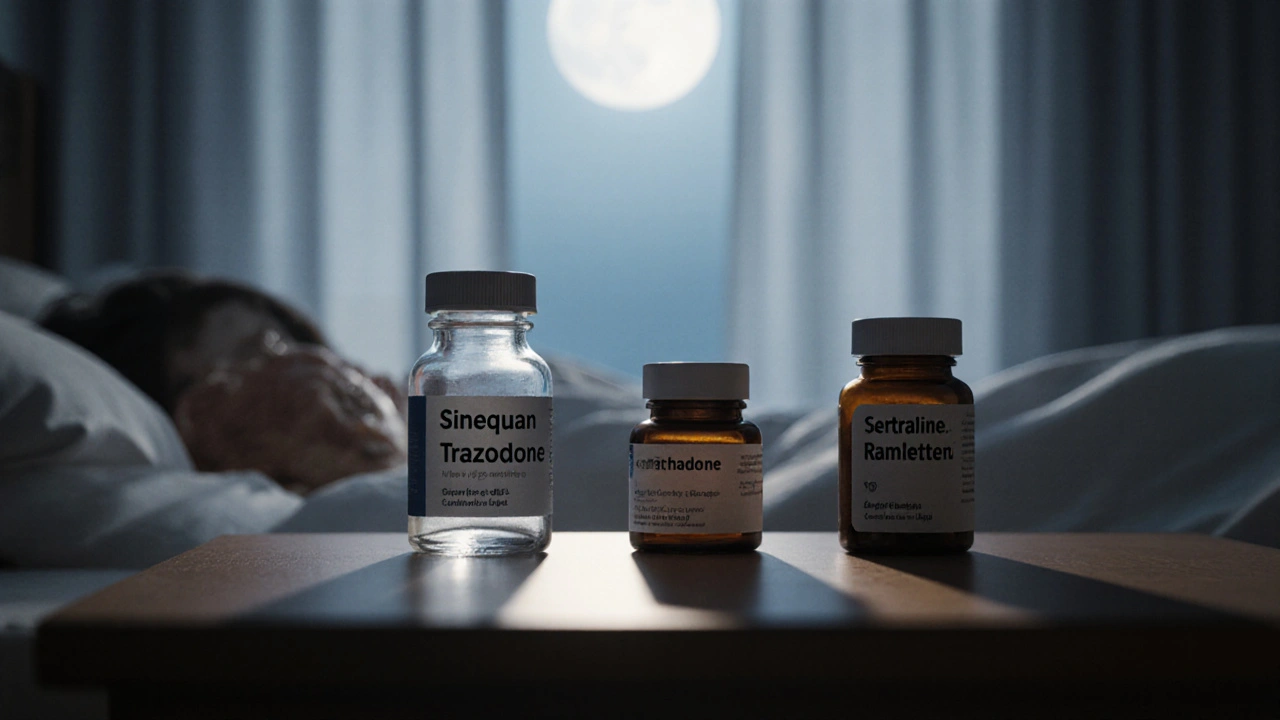Tricyclic Antidepressant: What You Need to Know
When talking about tricyclic antidepressant, a class of older mood‑lifting drugs that block the reuptake of serotonin and norepinephrine. Also known as TCA, it remains a go‑to option for many clinicians. Amitriptyline, a first‑generation tricyclic used for depression and chronic pain is perhaps the most recognizable, while Nortriptyline, the active metabolite of amitriptyline with a smoother side‑effect profile and Imipramine, another classic TCA often prescribed for depressive episodes round out the core trio. These drugs share a common mechanism yet differ in potency, dosing, and tolerability.
Key Features of Tricyclic Antidepressants
Tricyclic antidepressants encompass three main ideas: they treat major depressive disorder, they can be repurposed for anxiety or neuropathic pain, and they carry a distinct side‑effect spectrum. By inhibiting the reabsorption of two key neurotransmitters, they increase mood‑boosting signals in the brain (mechanism). This action requires careful titration because the same blockade can affect acetylcholine, leading to dry mouth, blurred vision, or constipation. Understanding the balance between therapeutic gain and anticholinergic load is essential before starting therapy.
From a clinical standpoint, TCAs are often chosen when patients have not responded to newer agents like SSRIs or SNRIs. Their broad pharmacology also means they can help with insomnia, especially when taken at night, and they are useful in treating certain headache disorders. However, their safety margin is narrower; an overdose can cause cardiac arrhythmias, so doctors assess heart health before prescribing. This risk profile influences which patients are good candidates, such as those without significant heart disease.
Another important aspect is drug interaction potential. Because TCAs are metabolized by liver enzymes CYP2D6 and CYP3A4, co‑administered medications that inhibit these pathways can raise TCA levels, increasing side‑effect risk. Conversely, enzyme inducers can lower drug concentrations, reducing efficacy. Patients should always review their full medication list, including over‑the‑counter supplements, to avoid unintended spikes.
When it comes to dosing, the principle is "start low, go slow." A typical initiation dose for amitriptyline might be 25 mg at bedtime, gradually climbing to 150 mg or more if tolerated. Nortriptyline often starts at 25 mg daily and can be increased to 100 mg. Imipramine follows a similar upward titration. Regular follow‑up appointments allow clinicians to monitor mood improvement, side‑effect emergence, and blood levels when needed.
Side effects can be grouped into three categories: anticholinergic (dry mouth, constipation), antihistaminic (sedation, weight gain), and anti‑adrenergic (orthostatic hypotension, dizziness). Younger patients may notice more sedation, while older adults are especially vulnerable to falls due to low blood pressure. Managing these effects often means timing the dose correctly, staying hydrated, and adjusting the regimen based on individual response.
Beyond depression, TCAs have proven useful in chronic pain syndromes such as fibromyalgia and diabetic neuropathy. Amitriptyline, for instance, is frequently prescribed at lower doses (10‑25 mg) purely for its analgesic properties. This repurposing showcases the class's versatility but also underscores the need for patient education about why a medication traditionally seen as an antidepressant is being used for pain.
For those worrying about weight gain, it's worth noting that not all TCAs affect appetite equally. Nortriptyline tends to have a milder impact on weight compared to amitriptyline. Lifestyle counseling—balanced diet, regular exercise—can offset potential increases. If weight becomes a major concern, clinicians might switch to alternatives with a more favorable metabolic profile.
Below you’ll find a curated collection of articles that dive deeper into each of these topics. From detailed drug comparisons to safety checklists and budgeting tips for buying generics online, the posts are designed to give you practical guidance and the latest insights on managing treatment with tricyclic antidepressants.

